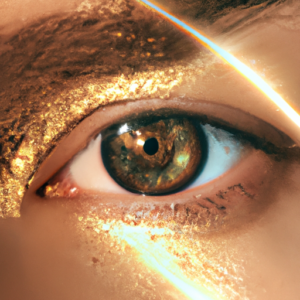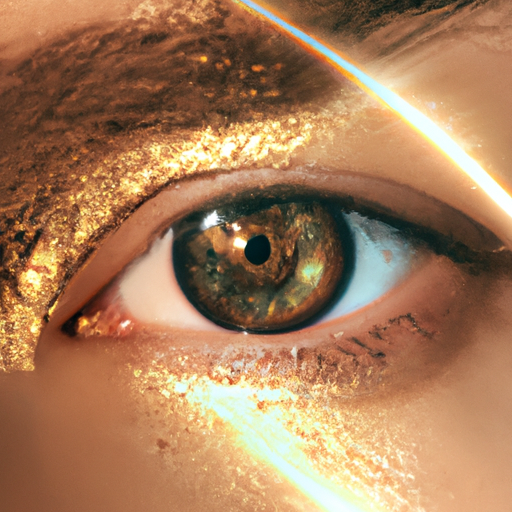Hey there! Let’s talk about beauty standards and eye shape
Alright, y’all. We all know that the concept of beauty is subjective and fluid. But, unfortunately, society’s expectations of what is considered attractive can impact how we see ourselves and others. And when it comes to eye shape, there are some specific standards that have been historically upheld. So, let’s dive into this topic and see how we can challenge the norm.
The History of Beauty Standards: From Ancient Times to Now
Let’s take a journey through the ages, shall we? Beauty standards have been prevalent in virtually every culture throughout history, and many ancient societies had their own unique ideals in terms of physical attributes. In ancient Egyptian society, for example, beauty was associated with youth and vitality. Cleopatra was known for her striking eyes, which were accentuated with kohl. In ancient Greece, physical perfection was highly valued, and beauty ideals were based on symmetry.
Fast forward to contemporary society, and beauty standards have become even more complex and dynamic. With advancements in technology and social media, trends are constantly changing and it can be difficult to keep up. It seems like every year there is a new ideal that everyone is striving for.
Despite the constant shifts in beauty standards, one thing remains the same: the impact of eye shape on what is considered beautiful. Keep reading to learn more about the types of eye shapes that are deemed desirable today.
Eye Shape: A Crucial Element in Beauty Standards
Let’s face it – eye shape is a vital aspect of beauty standards. It has always been an essential outcome of some cultures, which has led to narrow and idealistic standards of beauty. At times, these standards force people to seek surgical procedures such as double eyelid surgery or fillers to increase their appeal. The significant impact of eye shape is seen in all aspects of life, including media, pop culture icons, and even professional workplaces.
It is not hard to understand the perspective of society about the ideal eye shape. In most instances, an almond-shaped or monolid eye shape is preferred. Nonetheless, this perspective varies from culture to culture. For instance, in some parts of Asia, people with big, round eyes are highly admired. Meanwhile, a parallel trend in American and European culture is that hooded eyes are a sign of sleepiness and an ageing criterion that should be changed.

The cultural adaptations of beauty standards impact everyone, especially those with an uncommon eye shape. People with hooded, deep-set, or prosthetic eyes, or any other obscure eye shape, may feel insecure or as a deviation from society’s set standards. Ironically, most people end up judging others’ beauty standards, not realising that they may be subject to the same scrutiny.
The world certainly requires a change in these beauty standards. It’s time to end the stigma against people with uncommon eye shapes, open up people’s minds towards different varieties of beauty, and promote healthy representation. When we look in the mirror, we should see ourselves the way we are, stop comparing ourselves to other people’s beauty standards and celebrate our differences.
Transforming your Perception of Beauty Standards
Hey guys! So, breaking news: beauty standards are just made-up and change all the time! Crazy right? I used to obsess over having the “perfect” eye shape, whatever that means. But now I know that there’s no right or wrong shape when it comes to eyes. Here’s some advice on changing your own perceptions of beauty standards:
Embracing Your Own Eye Shape
The first step in changing your perceptions of beauty standards is embracing your own eye shape. Whether your eyes are hooded, monolid, round or almond-shaped, they’re beautiful just the way they are. Trust me, guys, I used to obsess over having bigger eyes or a higher crease, but I realized that trying to fit a certain mold was stressing me out and making me feel bad about myself. Don’t let societal norms dictate how you view yourself!
Supporting Others Who Challenge the Status Quo
If you want to make a difference in the beauty world, don’t just focus on yourself. Support others who challenge the status quo. If you see someone on social media or in real life rocking a unique eye shape, give them a like or a compliment. You can also start conversations with others about the ludicrousness of beauty standards. Awareness is key, guys!
And if you’re looking for more expert advice on eye shapes, check out besteyelashextensionsupplies.com. They have tons of tips and tricks for all eye shapes, and will remind you that beauty is subjective and ever-changing.
Remember, guys, beauty standards are just that, standards. They’re not laws or rules. It’s up to us to transform the way we view ourselves and others one step at a time. Here’s to a future where every eye shape is celebrated and appreciated!
My Final Thoughts on Beauty Standards and Eye Shapes
Wow, what a journey it has been exploring the complex topic of beauty standards and eye shapes. After doing research and reflecting on my own experiences, I have come to some conclusions.
Firstly, beauty standards are constantly changing and differ from culture to culture. They are often based on arbitrary criteria and can cause harm to individuals who don’t fit into society’s narrow definition of beauty.
Secondly, eye shape is just one small aspect of what makes a person beautiful. While certain eye shapes may be more commonly seen as desirable, we should celebrate and embrace the unique features of each individual.
Lastly, changing perceptions of beauty standards starts with each of us. We must challenge our own biases and support others who may not fit into society’s beauty norms. By doing so, we can create a more inclusive and accepting world.
Overall, beauty standards and eye shapes are complex topics that require ongoing discussion and reflection. Let’s continue the conversation and work towards a world where everyone feels beautiful and valued for who they are, both inside and out.
